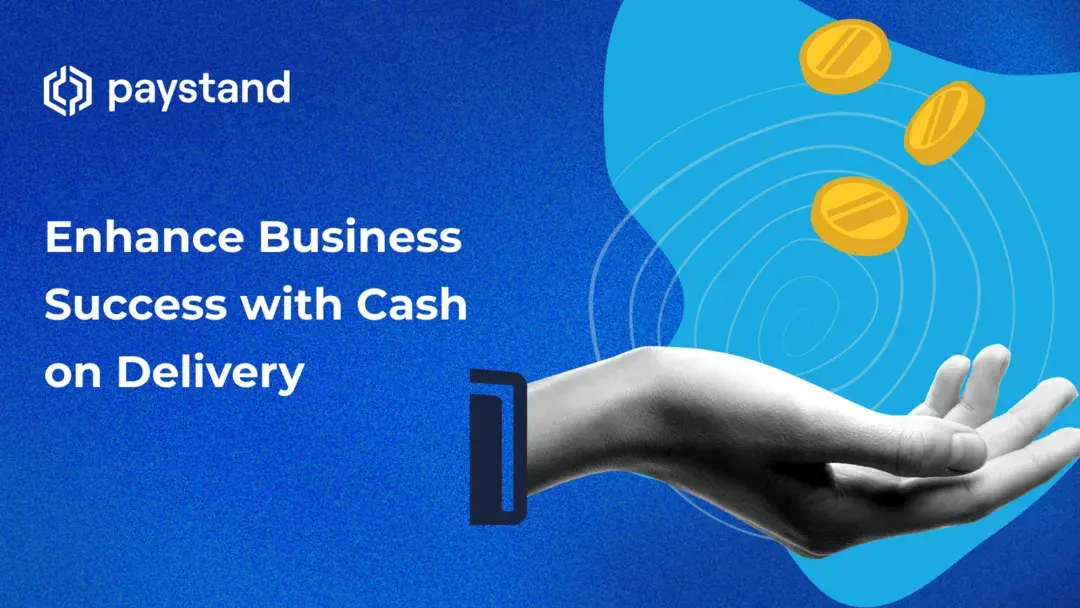Enhance Business Success with Cash on Delivery

Table of Contents
- What is cash on delivery?
- What are the benefits of cash on delivery?
- How does cash on delivery work?
- What is the opposite of cash on delivery?
- How Paystand elevates cash on delivery for modern finance
Key Takeaways
- Cash on Delivery (COD) improves cash flow, customer trust, and market reach while minimizing financial risks.
- Implementing fraud prevention and clear COD policies helps businesses manage COD-related risks effectively.
- COD benefits customers by adding payment convenience and security, and it benefits businesses by reducing chargebacks and accelerating cash flow.
- Offering prepaid options alongside COD can optimize cash flow and cater to customer payment preferences.
Mastering business financial management means finding ways to keep cash flowing smoothly while offering payment options that build customer trust. Cash on Delivery (COD) meets this challenge by allowing customers to pay only upon receiving their orders, appealing to those who value security and flexibility. For businesses, COD opens doors to new markets and can improve financial decision-making by minimizing risks tied to upfront payments.
Curious about the impact of COD on your business strategy? Discover how COD’s unique benefits and best practices can enhance your financial management approach and customer relationships.
What Is Cash on Delivery?
Cash on delivery (COD) is a payment method where customers pay only upon receiving their order. This option can enhance customer satisfaction and broaden market reach by attracting buyers who prefer deferred payment. However, businesses must carefully manage cash flow and mitigate risks associated with COD transactions.
COD provides customers with added security and flexibility, as they can inspect products before payment. This approach also aids in budgeting, as payment only occurs at delivery. For businesses, COD can attract a wider customer base and drive satisfaction by accommodating those who prefer deferred payment.
Businesses can implement fraud prevention strategies such as identity verification and address confirmation to reduce COD-related risks. Additionally, they should establish clear COD policies covering payment procedures, return handling, and damage claims. Partnering with experienced, reputable logistics providers can also streamline COD processes.
What Is the Meaning of Cash Delivery?
"Cash delivery" is simply another term for cash on delivery (COD), where payment is made upon receipt of goods.
What Does COD Mean in Shipping?
In shipping, COD indicates that the customer is responsible for paying when they receive the goods. This method is common when buyers are less inclined to pay online or in advance, as it offers them added trust in the transaction process.
What Is Another Name for Cash on Delivery?
In addition to "cash on delivery," COD may also be called "collect on delivery." Both terms mean the same thing.
What Are the Benefits of Cash on Delivery?
There are several benefits for customers and businesses to using COD for both customers and businesses.
| For Customers | For Businesses | |
|---|---|---|
| Convenience | Allows cash payment for those without credit cards or who prefer not to use them online. | Reduces chargebacks as payment disputes are avoided after delivery. |
| Security | Eliminates online fraud risk since no financial information is shared. | Boosts sales by appealing to customers who are hesitant about online payment. |
| Control | Enables product inspection before payment, ensuring satisfaction. | Speeds up cash flow with prompt payment at delivery. |
How Does Cash on Delivery Work?
-
Order placement: A customer selects COD at checkout and provides shipping and contact details.
-
Order processing and shipment: The store processes and ships the order to the customer’s address.
-
Delivery: The delivery agent arrives, allowing the customer to inspect the package before payment.
-
Payment collection: The agent presents an invoice, and the customer pays in cash.
-
Completion and confirmation: The agent records the payment and updates the order status, and the customer receives confirmation.
What Is an Example of Cash on Delivery?
In a B2B transaction, a corporate buyer placing an order for office supplies selects "Net 30" as their payment term. When the goods arrive, the receiving department inspects the shipment and verifies the products' condition before signing the delivery receipt. This streamlined process fosters confidence by guaranteeing contentment upon the transaction's conclusion.
What Is the Opposite of Cash on Delivery?
The opposite of COD is "prepaid" or "advance payment." The customer pays for the product or service before shipment in a prepaid transaction. This approach can benefit businesses by improving cash flow and reducing non-payment risk.
For many companies, offering prepaid options alongside COD can provide flexibility for different types of buyers. Balancing COD and prepaid payments in a way that complements your business financial management strategy can streamline revenue collection and optimize customer service.
How Paystand Elevates Cash on Delivery for Modern Finance
Adapting to customer payment preferences while maintaining smooth cash flow is crucial for business success. Cash on Delivery (COD) offers a solution that allows customers to pay upon receipt. This trusted option fosters loyalty and enhances financial decision-making by minimizing upfront payment risks.
Our digital B2B payment platform complements COD with secure, automated receivables and real-time payments, ensuring businesses can manage cash flow effectively while meeting customer needs. Want to learn how Paystand is helping shape the future of finance? Download our Future of Finance in 2025 ebook to explore the innovations transforming finance.






